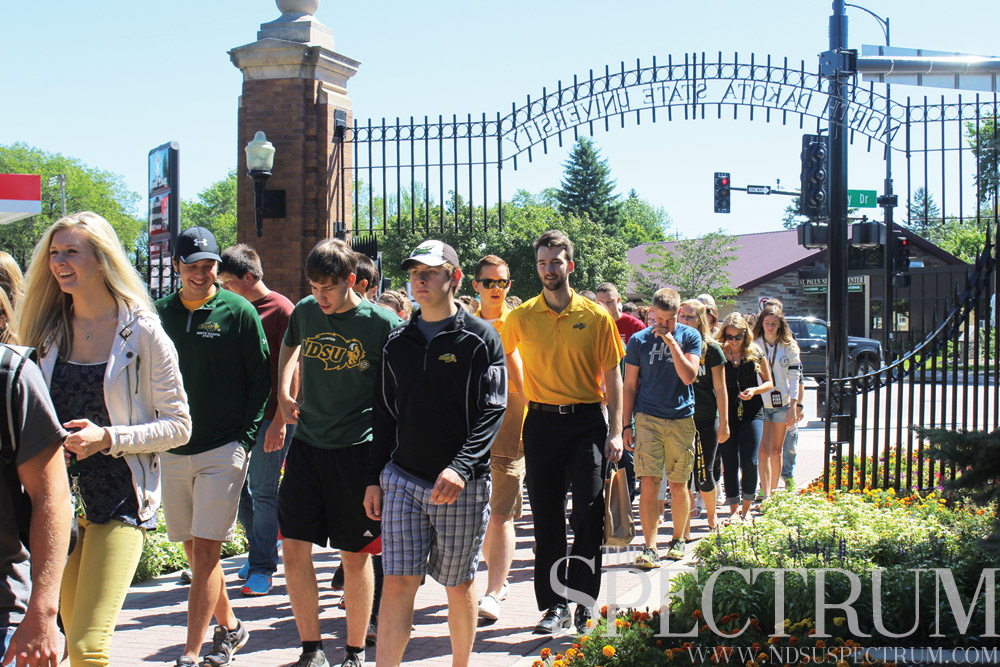
Xiaoxi Wang pays $23,000 per semester as an international pharmacy student.
The Jinan, China, native said she took a scholarship offer for North Dakota State’s “great pharmacy programs.”
“I have sometimes between $12,000 to $18,000 tuition per semester,” Wang said.
Wang is one of thousands of NDSU students paying tuition this month for the spring 2016 semester.
Spring semester tuition is due Wednesday.
Cost
In the spring 2016 semester, full-time students who are North Dakota residents will be paying $3,381 in base tuition, full-time Minnesotan students will be paying $3,787 in base tuition and full-time non-resident students will be paying $9,028.
All students are also required to pay mandatory student fees, regardless of the benefits gained from paying the fees.
For the spring 2016 semester, every student will pay $607.86 in mandatory student fees.
Where tuition goes
Tuition is not tracked for specific destinations at the university, said Bruce Bollinger, NDSU vice president for finance and administration. Instead, tuition is accumulated into a general pool of money that is then distributed to fund university operations.
Bollinger said that both North Dakota Gov. Jack Dalrymple’s office as well as the NDUS office have an indirect goal of NDSU being funded 60 percent by state funding and 40 percent by tuition funding.
The 2014-15 NDSU annual budget showed about $124 million was funded by the general state fund and about $115 million was funded by tuition payments, leaving 28 percent of the school’s overall budget being state funded and 26 percent of the school’s overall budget being funded by tuition. The rest of the budget is funded by sources such as grants and contracts.
From these two sources of funding, the money is pooled and distributed to fund NDSU.
“The revenue comes in, comes in to one big pot, we determine the budgets and all the various operations of the universities, and so the tuition is comprised of a percentage of that budget along with the state,” Bollinger said. “We don’t keep track of how much of that budget is tuition and how much of that is state because it’s going for the overall purpose and mission of the school.”
Bollinger also said the state does not hold NDSU accountable to know which part of funding was contributed by state funding and which part was tuition-funded.
Where fees go
There are eight different fees that make up the aggregate funding from student fees.
These fees are the student activity fee, the union bond fee, the career services fee, the technology fee, the health/wellness fee, the library fee, the North Dakota Student Association fee and the ConnectND fee.
Bollinger said “most of the fees are for a specific purpose … the wellness center is 100 percent funded by the fee that is associated to support that.”
Student fees are controlled by the student fee advisory board, which is chaired by student body president Eric McDaniel.
McDaniel said though student government has the majority of the votes on the SFAB, the only fee that student government directly oversees is the student activity fee.
Jay Homan, student government executive commissioner of finance, said, “We only monitor and track and disperse the student activities fee, so that’s about $4 million, just less than that … $3.8 million of student activity fee that we allocate to our Tier I and Tier II organizations.”
McDaniel also said that the student activity fee has to go to something benefitting students and gives services to students.
